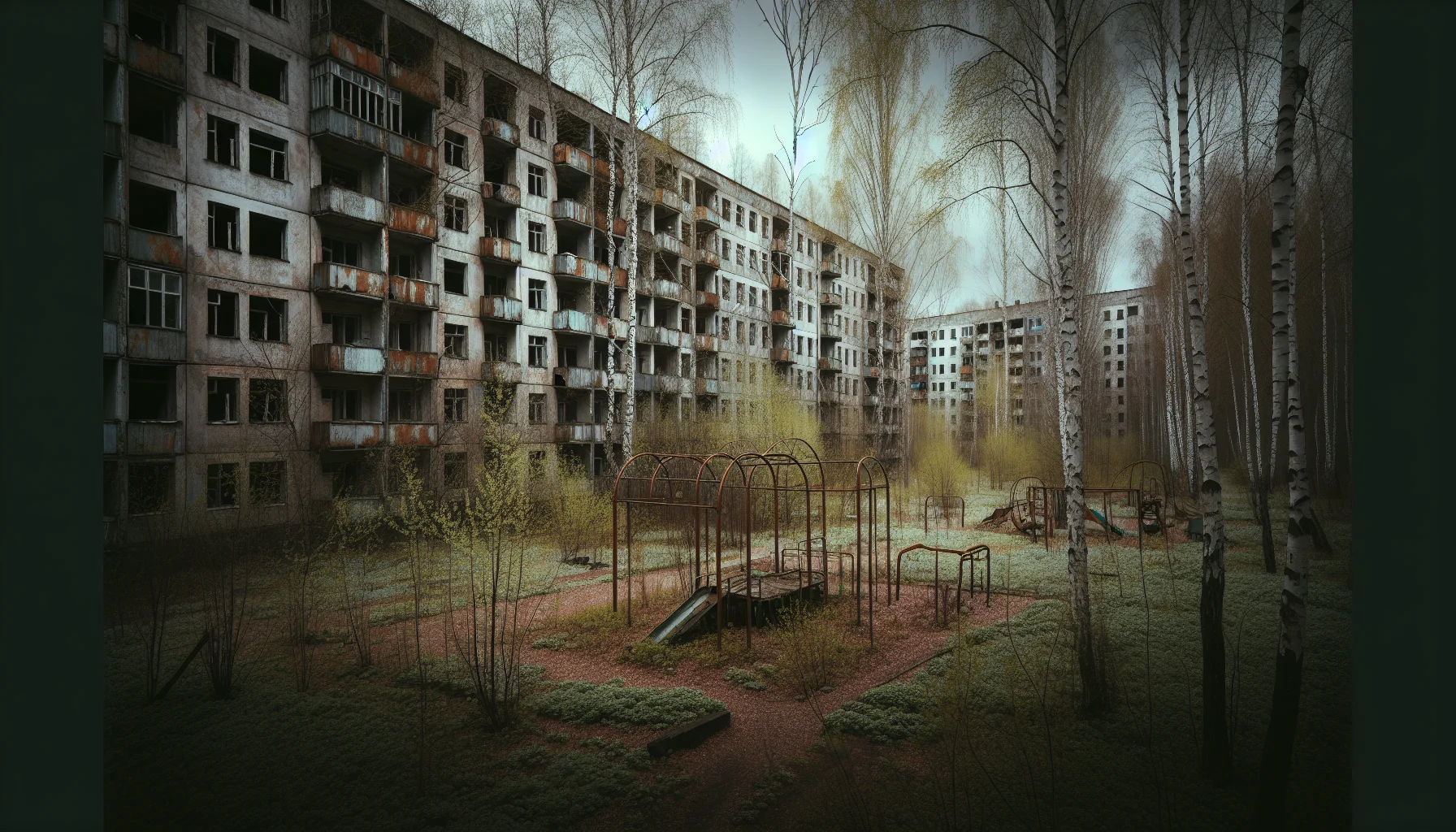
Chernobyl Disaster
by: The Calamity Calendar Team
April 26, 1986
The Edge of Night
In the stillness of an early morning on April 26, 1986, the world was about to witness a catastrophe that would join the strands of human fallibility and nuclear ambition. The Chernobyl Nuclear Power Plant's Reactor No. 4, near the town of Pripyat in what was then the Soviet Union's Ukrainian SSR, was primed for a routine safety test—an exercise intended to reveal weaknesses in case of a power outage. Little did anyone suspect that this very test would instead uncover startling vulnerabilities in the system, bringing disaster on a scale previously unimaginable.
An Invisible Enemy Lurks
The Chernobyl plant was the pride of Soviet engineering, housing four RBMK nuclear reactors. These were symbols of the supposed technological prowess of the era—each one a powerful beast, yet carrying a latent flaw: the reactor's design made it dangerously reactive at low power levels. This peculiar trait, the positive void coefficient, was one that operators knew too little about.
On April 25, the descent into chaos began subtly enough. Though the test was scheduled, a delay kept Reactor No. 4 running at half power for an extended period. By nightfall, decisions were made to press on despite the precarious power levels—each command a calculated risk, carrying unintended consequences.
On the Brink
In the hours approaching dawn, Reactor No. 4's control room was a tableau of growing tension. Present were technicians, inadequately prepared for the nuances of the task at hand. They found themselves disabling crucial safety systems to maintain core pressure and maneuvering to hold the reactor's power output in a delicate balance. But this balance was temporary, teetering on an edge just waiting to topple.
At precisely 1:23 a.m., it did. An uncontrolled power surge set in motion a chain reaction, unstoppable and destructive. The reactor core burst to life—not with power, but with fiery fury—an explosion ripping through it. Metal twisted, concrete shattered, and radioactive particles surged into the night sky, like phantoms released upon the world.
Heroes or Sacrifices?
As the chaos unfolded, brave firefighters rushed to the scene, confronting flames with heroism unmatched by comprehension. They battled infernos fueled by graphite fires amidst the core's wreckage. The silent danger—radiation—was an enemy they couldn't see, but one that penetrated everything.
Thanks for subscribing!
It was only hours later, a full day post-explosion, that the true scale of the emergency initiated the evacuation of Pripyat. Its 49,000 residents were shepherded away hastily, told they would return soon. They never would. Without warning or farewell, these people left behind lives, loves, and homes, vaporized by contamination.
Containment on the Scale of a Nation
As weeks turned into months, the Soviet response escalated into a herculean effort to contain the damage. Liquidators—a force hundreds of thousands strong—marched into the irradiated aftermath. They laid boron and sand from the skies to quell emissions, entombing the reactor beneath a "sarcophagus," a grim monument to human error.
Yet, the bill came due not just in rubles—estimated at upwards of $68 billion—but in irreparable economic tremors that would contribute to the Soviet Union's unraveling in the coming years.
Long Shadows
Though official records initially marked a grim tally of 2 immediate deaths and 28 more succumbing to acute radiation sickness, the true cost was much heavier. The lingering specter of radiation touched children, mothers, fathers, with cases of thyroid cancer and other diseases spiking dramatically.
Globally, the incident reshaped perceptions of nuclear power. Intensified scrutiny fostered sweeping changes in nuclear safety worldwide, as regulatory bodies like the IAEA worked tirelessly to prevent another Chernobyl. Protocols, once considered robust, were overhauled, learning from a disaster that no one wanted repeated.
The Legacies of Chernobyl
Now, decades later, the landscape around Chernobyl is touched both by silence and by life—a paradox where nature slowly reclaims what humans forsook. The ghostly city of Pripyat, with its overgrown streets and empty rooms, offers a haunting testament. Studies continue to emerge, each one unveiling more layers of genetic, ecological, and health impacts still being felt to this day.
The Chernobyl disaster stands eternal, a reminder of the thin line between control and chaos, and of the resilience of the human spirit in the face of profound adversity. Each story told is a step closer to understanding, wanting not only to remember—but to learn.
Stay in the Loop!
Become a Calamity Insider and get exclusive Calamity Calendar updates delivered straight to your inbox.
Thanks! You're now subscribed.